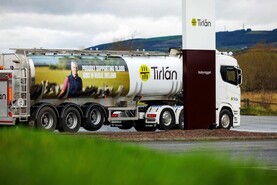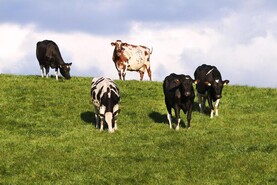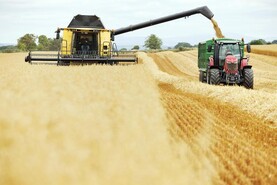A CAFRE conference in Ballynahinch covered the issue of labour availability on NI farms, with particular reference to the situation on dairy units.
CAFRE surveyed 38 dairy farms in the county during 2022, to provide evidence on the current state of play.
The farms surveyed had 6,650 cows in total and produced 56m litres of milk per year. Anna Truesdale of CAFRE presented the results. The figures on the labour required on these farms, where the average herd size was 175 milking cows, (range 65 to 600 cows) were pretty stark.
On average, the farms required 66 hours of labour each week. This is a heavy workload, and far in excess of the typical office worker, who works 37 hours a week.
On the farms, a major part of the workload typically falls on the farmer (47%). The remainder is split equally between other family members (27%) and employees (26%).
Of course, averages conceal the range. The average of 66 hours per week had a range from 30 hours to 85 hours across the farms.
The survey figures highlighted the total hours worked each year per farm was 8,089 hours. On a cow basis per year, the average was 55 hours, with a range of 21 to 80 hours per cow.
The attitude of those in the audience at the meeting was that these heavy workloads are not sustainable in the long term. And should the farmer suffer an accident or develop a health issue and be unavailable for a time, then a major gap in the labour availability emerges and may be difficult to cover.
Obviously as each farm has developed over the years it has its own land area, facilities in buildings and the milking parlour and labour input. However, each farm has its own specific labour issues.

Conail Keown and Anna Truesdale from CAFRE.
The improvements that can be made on-farm
So, what can be done to improve the situation on the farm? Using the data collected in the CAFRE survey, changes made on particular farms were highlighted and some general points made that could be applied on any farm.
There was little discussion about the reduction in the supply of labour following Brexit and the impact of the Covid pandemic and how supply of labour could be reversed. Rather, the focus was on how farmers could make the most of the labour they have at the moment.
Anna Truesdale was keen to stress that before any change can be made, the farmer and family must be open to accepting change and be willing to embrace new ideas. She stressed that attention should be on issues within the control of the farmer – there is little point in worrying about issues beyond the farm gate over which the farmer has no control.
Issues include existing work practices and how they are carried out; the quality of the work; and how efficiently tasks are completed.
Case studies
Reporting on case studies, one farmer had adopted robotic milking and used LEAN management techniques to achieve a labour input of only 30 hours per week.
Another with a large herd concentrated on efficiencies in his calf-rearing operation. With a new calf shed he has cut his incidence of calf sickness substantially. The associated savings in labour and the vet and medicines bill meant this farmer now has a working week of 45 hours.
The survey showed that milking and feeding the cows plus calf feeding took up the biggest proportion of the labour input, at 50% to 60% or more, which emphasised the need for efficiencies in these tasks.
Issues covered included size and design of the parlour and cow flow both into and out of the parlour. As herds have expanded in size, many parlours are close to their limit for milking and substantial capital investment may be needed for a new unit.
Labour-saving
However, some farmers in the survey looked at other investments including heat detection equipment, mechanised cubicle sweepers and bedders, improving drafting facilities, having a cart to move milk for calves, or good fences and laneways to and from grazing. Prudent spending on these items have freed up time on the farms surveyed. And many farms use contractors rather than doing it “in house”, mostly for silage making and slurry spreading.
Anna also emphasised that making some small changes can make for a big difference in the labour requirement. Her list included once a day AI, having sufficient milking points and an efficient milking routine, automatic washing systems and adequate feed space. Also on her list were gates that swing and open and close easily.
In conclusion, she said communication is key to a smooth operation on the farm. Use white boards, create a WhatsApp group, set out standard operation procedures and make sure everyone is working towards the same goal. In fact, there should be more emphasis on managing people rather than on managing cows.
Read more
New livestock genetics chief outlines opportunities ahead
No magic bullet to cashflow issues on dairy farms
A CAFRE conference in Ballynahinch covered the issue of labour availability on NI farms, with particular reference to the situation on dairy units.
CAFRE surveyed 38 dairy farms in the county during 2022, to provide evidence on the current state of play.
The farms surveyed had 6,650 cows in total and produced 56m litres of milk per year. Anna Truesdale of CAFRE presented the results. The figures on the labour required on these farms, where the average herd size was 175 milking cows, (range 65 to 600 cows) were pretty stark.
On average, the farms required 66 hours of labour each week. This is a heavy workload, and far in excess of the typical office worker, who works 37 hours a week.
On the farms, a major part of the workload typically falls on the farmer (47%). The remainder is split equally between other family members (27%) and employees (26%).
Of course, averages conceal the range. The average of 66 hours per week had a range from 30 hours to 85 hours across the farms.
The survey figures highlighted the total hours worked each year per farm was 8,089 hours. On a cow basis per year, the average was 55 hours, with a range of 21 to 80 hours per cow.
The attitude of those in the audience at the meeting was that these heavy workloads are not sustainable in the long term. And should the farmer suffer an accident or develop a health issue and be unavailable for a time, then a major gap in the labour availability emerges and may be difficult to cover.
Obviously as each farm has developed over the years it has its own land area, facilities in buildings and the milking parlour and labour input. However, each farm has its own specific labour issues.

Conail Keown and Anna Truesdale from CAFRE.
The improvements that can be made on-farm
So, what can be done to improve the situation on the farm? Using the data collected in the CAFRE survey, changes made on particular farms were highlighted and some general points made that could be applied on any farm.
There was little discussion about the reduction in the supply of labour following Brexit and the impact of the Covid pandemic and how supply of labour could be reversed. Rather, the focus was on how farmers could make the most of the labour they have at the moment.
Anna Truesdale was keen to stress that before any change can be made, the farmer and family must be open to accepting change and be willing to embrace new ideas. She stressed that attention should be on issues within the control of the farmer – there is little point in worrying about issues beyond the farm gate over which the farmer has no control.
Issues include existing work practices and how they are carried out; the quality of the work; and how efficiently tasks are completed.
Case studies
Reporting on case studies, one farmer had adopted robotic milking and used LEAN management techniques to achieve a labour input of only 30 hours per week.
Another with a large herd concentrated on efficiencies in his calf-rearing operation. With a new calf shed he has cut his incidence of calf sickness substantially. The associated savings in labour and the vet and medicines bill meant this farmer now has a working week of 45 hours.
The survey showed that milking and feeding the cows plus calf feeding took up the biggest proportion of the labour input, at 50% to 60% or more, which emphasised the need for efficiencies in these tasks.
Issues covered included size and design of the parlour and cow flow both into and out of the parlour. As herds have expanded in size, many parlours are close to their limit for milking and substantial capital investment may be needed for a new unit.
Labour-saving
However, some farmers in the survey looked at other investments including heat detection equipment, mechanised cubicle sweepers and bedders, improving drafting facilities, having a cart to move milk for calves, or good fences and laneways to and from grazing. Prudent spending on these items have freed up time on the farms surveyed. And many farms use contractors rather than doing it “in house”, mostly for silage making and slurry spreading.
Anna also emphasised that making some small changes can make for a big difference in the labour requirement. Her list included once a day AI, having sufficient milking points and an efficient milking routine, automatic washing systems and adequate feed space. Also on her list were gates that swing and open and close easily.
In conclusion, she said communication is key to a smooth operation on the farm. Use white boards, create a WhatsApp group, set out standard operation procedures and make sure everyone is working towards the same goal. In fact, there should be more emphasis on managing people rather than on managing cows.
Read more
New livestock genetics chief outlines opportunities ahead
No magic bullet to cashflow issues on dairy farms







 This is a subscriber-only article
This is a subscriber-only article










SHARING OPTIONS: